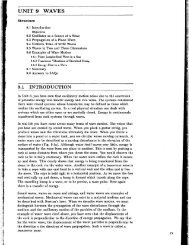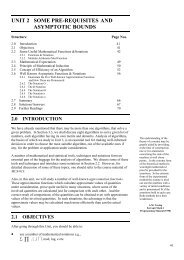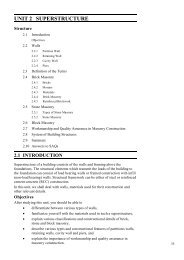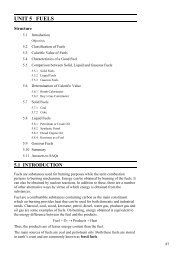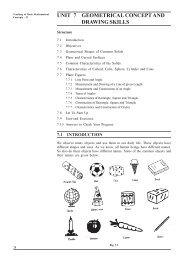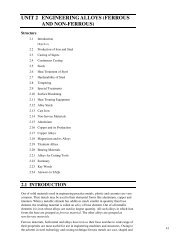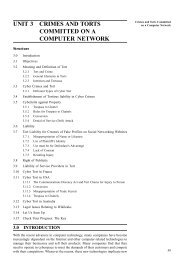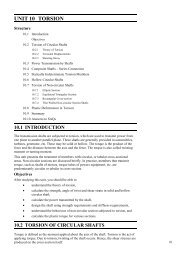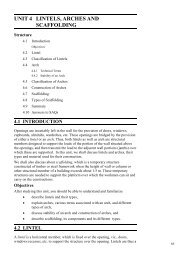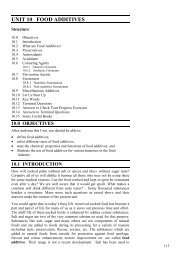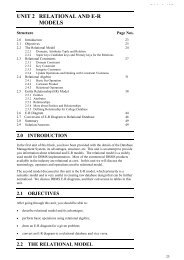unit 1 differential calculus - IGNOU
unit 1 differential calculus - IGNOU
unit 1 differential calculus - IGNOU
You also want an ePaper? Increase the reach of your titles
YUMPU automatically turns print PDFs into web optimized ePapers that Google loves.
Remark<br />
If the interval is closed, the limit in the continuity test over the interval is<br />
two-sided at an interior point and the appropriate one-sided at the end<br />
points.<br />
Example 1.16<br />
Prove that f (x) = sin x is continuous at x = 0.<br />
Solution<br />
(i) f (0) = sin 0 = 0<br />
(ii) f ( x)<br />
= sin x = 0 and<br />
lim<br />
x →0<br />
lim<br />
x →0<br />
(iii) f ( x)<br />
= f (0) = 0<br />
lim<br />
x →0<br />
Therefore, f (x) = sin x is continuous at x = 0. (In fact sin x and cos x are<br />
continuous at each real x.)<br />
Example 1.17<br />
Examine the continuity of the function .<br />
1<br />
f ( x)<br />
=<br />
x<br />
Solution<br />
The function is defined for all non-zero real value of x. It is not defined at<br />
x = 0.<br />
Figure 1.18<br />
1<br />
Also lim f ( x)<br />
= = f ( x0),<br />
if x0<br />
≠ 0<br />
x → x x<br />
0<br />
0<br />
Therefore, the function is continuous for all real x ≠ 0. It fails to be<br />
continuous at x = 0 (why)? (Figure 1.18). This function is continuous on<br />
any interval which does not include x = 0 as an element of it.<br />
Theorem 4<br />
If the functions f (x) and g (x) are continuous at x = a, then<br />
(i) f (x) ± g (x),<br />
(ii) f (x) g (x), and<br />
y<br />
0<br />
1<br />
y =<br />
x<br />
x<br />
Differential Calculus<br />
33




